One of my long term photographic projects is a study of what is sometimes referred to as “The Night-time Economy”, when the streets of our cities are transformed by revellers. It’s a lively world, in turns funny, tragic and mundane. I’m not the first to document this – today’s street photographers such as Maciej Dakowicz (see Cardiff After Dark http://www.flickr.com/photos/maciejdakowicz/sets/1391696/) and Stephen Griffin (see Leeds by night – http://www.flickr.com/photos/griffleriff/sets/72157614966079103/) have inspired me, as have historic photographers such as my favourite, Arthur Fellig (popularly known as “Weegee”) (see http://en.wikipedia.org/wiki/Weegee).
Like many, I came in to news photography as a hobbyist, discovering my technique in my spare time before learning the business through trial and error and with the help of a few generous and experienced shooters and by purchasing professional training, undertaken in my own time.
In the five or so years since I started photographing at night, my pictures have changed. I started off shooting with a single camera and a wide zoom lens, purely for pleasure. I now carry two cameras – one with a fixed, fast, wide lens and one with a telephoto zoom, and never with a flash. I now shoot less with what some would define as a street photography aesthetic and more with a sharpened sense of what’s commercial, although I still value what I do as street photography. My technique keeps improving, as do the cameras and lenses I use, enabling me to take photos today that I couldn’t in previous years.
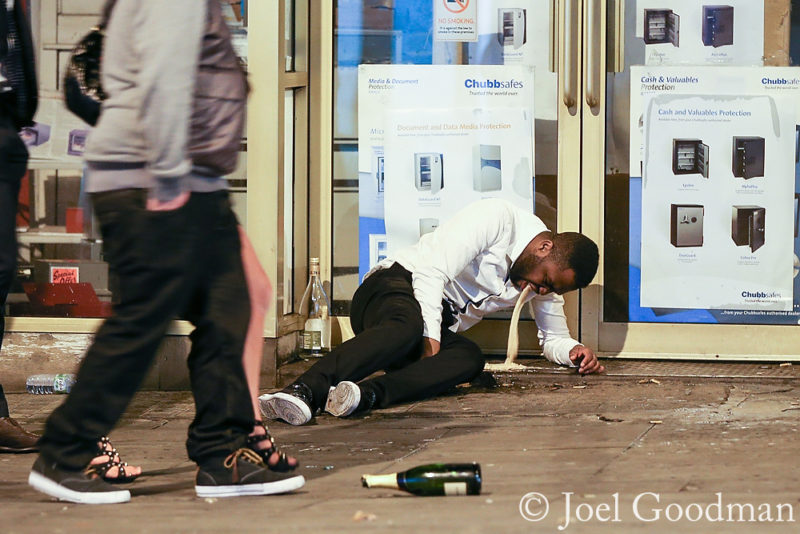
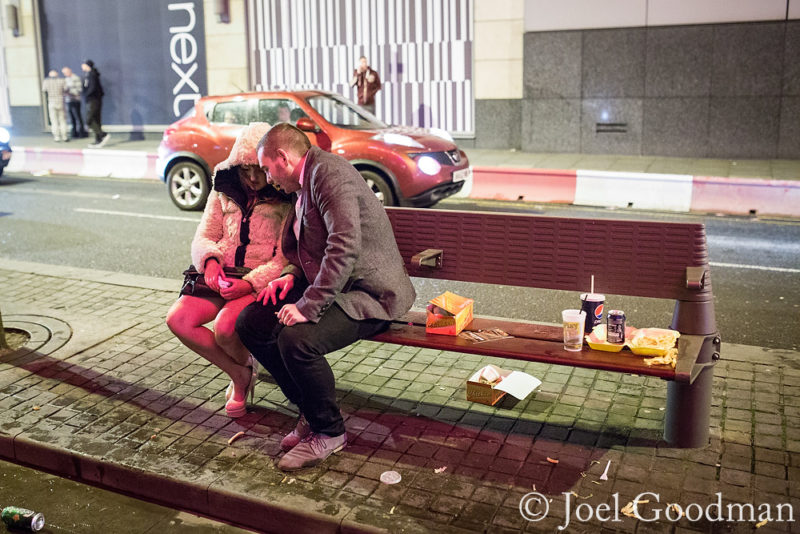

Shooting at night amongst crowds of often drunk, sometimes jolly, sometimes angry people, a mix of visitors and regulars, door staff and police, is socially challenging and satisfying. On any given night I might enjoy several long, entertaining conversations. My cameras invite questions and open doors to conversations that I’d never otherwise have. They also invite hostility from some who, I feel, fundamentally misunderstand my intent and purpose. Whenever possible I take time out to explain what it is I do, why it interests me and, more broadly, why people shouldn’t fear photography. I find working directly and openly, in plain view rather than from round corners, best in terms of getting the shots and in enabling me to allay the fears of those whose default mode is mistrust. I have nothing to hide and I feel no need to be furtive in my approach. Still, some treat me with suspicion and, sometimes, outright hostility, occasionally leading to violence.
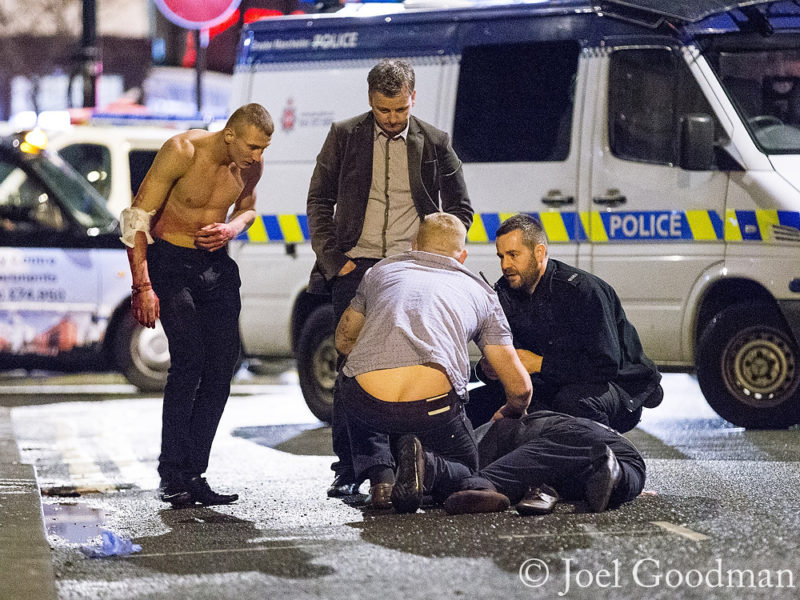
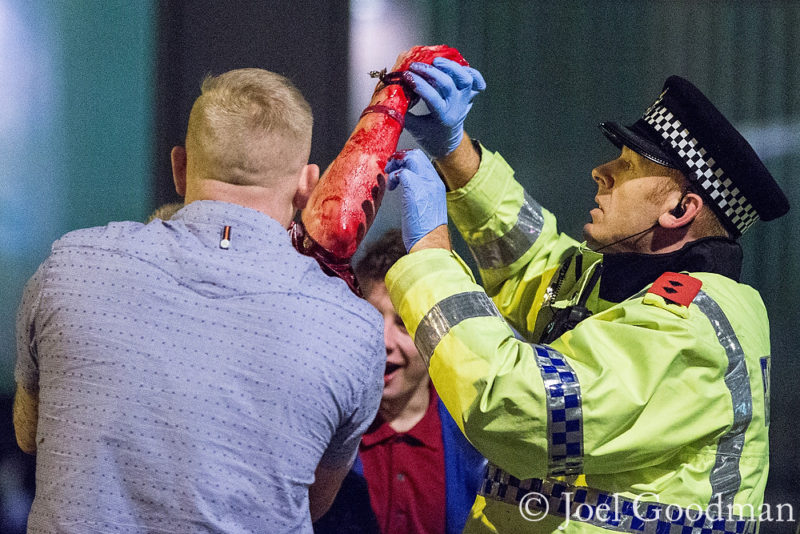
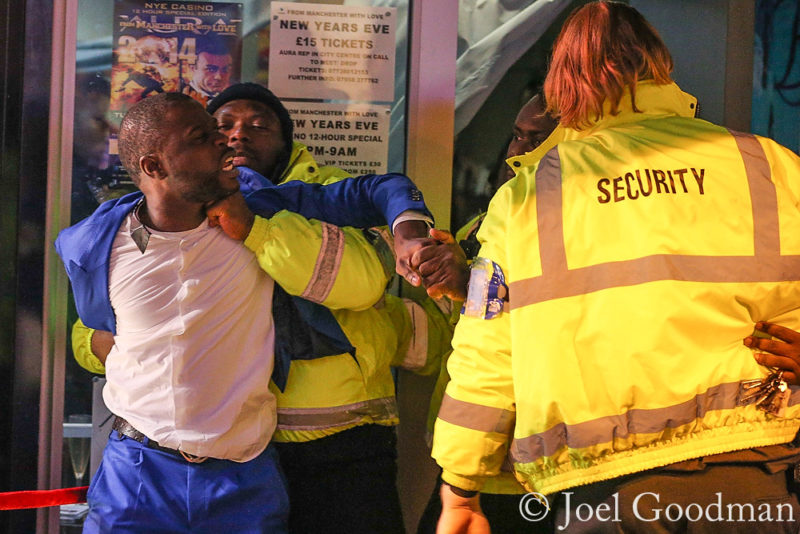
Usually I’m ignored by police. I prefer this. I don’t want to get in their way – they are understaffed during peak periods and have concerns of their own. A friendly chat about the weather or how busy things are isn’t uncommon and often puts us all at our ease. But sometimes an officer will show a default mistrust of photography. The moral panic driving suspicion that photographers are either terrorists scouting locations or sleazy perverts taking up-skirt photographs has no connection with reality. 99% of the time such irrational fears can be allayed with a friendly chat or, if not, simply terminated with an agree-to-disagree response. Taking photographs from a public vantage of anything and anyone – including police – is absolutely legal, and rightly so. Unfortunately there are also times when that suspicion is backed up by a form of hostility that I find troubling. No photographer – not a press photographer or a hobbyist – has to prove that they are *not* a criminal or justify their right to photograph in a public place. Whilst there may be no rationalising with a drunk and angry reveller, it shouldn’t be necessary to stand up and defend fundamental freedoms and rights, as defined in law, with a trained police officer.
Unfortunately I had to do just that on New Year’s Day and found myself cuffed and under arrest as a consequence. A great deal of the work that I do as a news photographer involves contact with the police, whether directly or from a distance. Because it’s news related, it often involves situations where things have gone wrong, when tragedies have occurred. It’s important and right to photograph and document these stories, even though they may involve heightened emotions and stress for those affected. It’s rare that, if not respected and accommodated, this isn’t at least understood and tolerated by attending police.
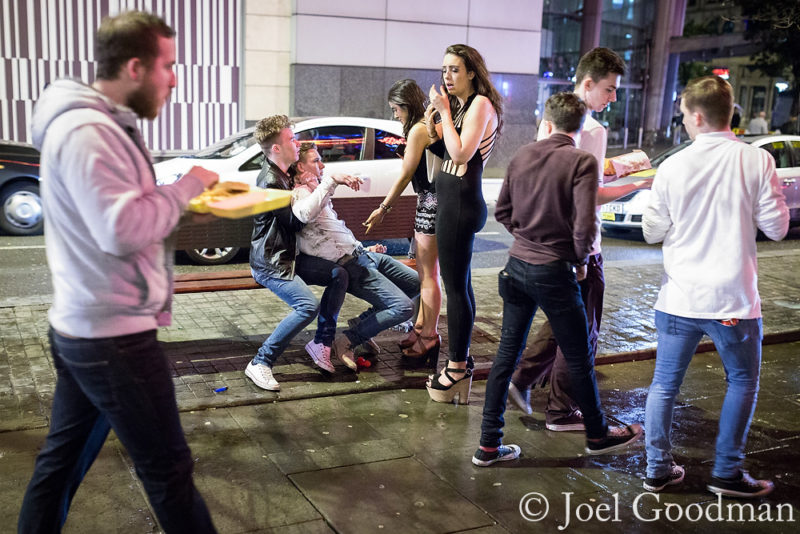

I’m not a phone hacker, a paparazzo, a paedophile or a terrorist, I am a news photographer and will not accept any implication to the contrary. If you feel differently, please talk to me nicely and I’ll happily discuss this on friendly terms. Do not demand I justify myself under threat of arrest because I will stand up for my rights.

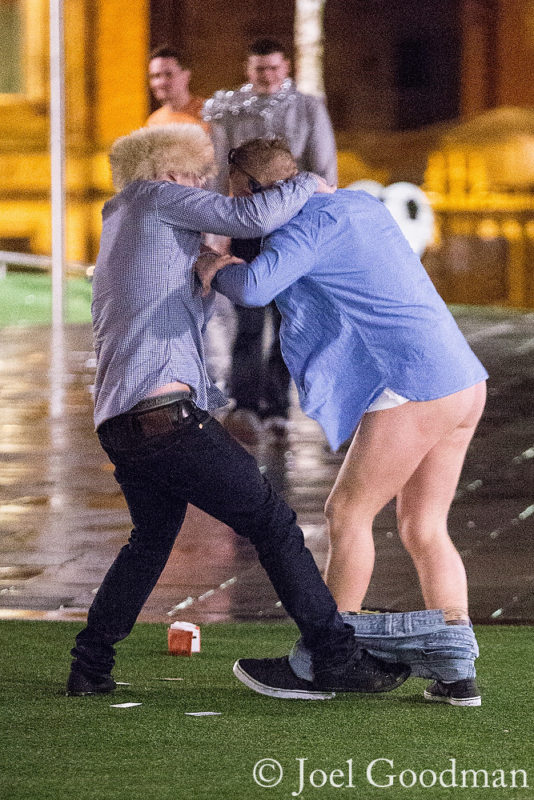
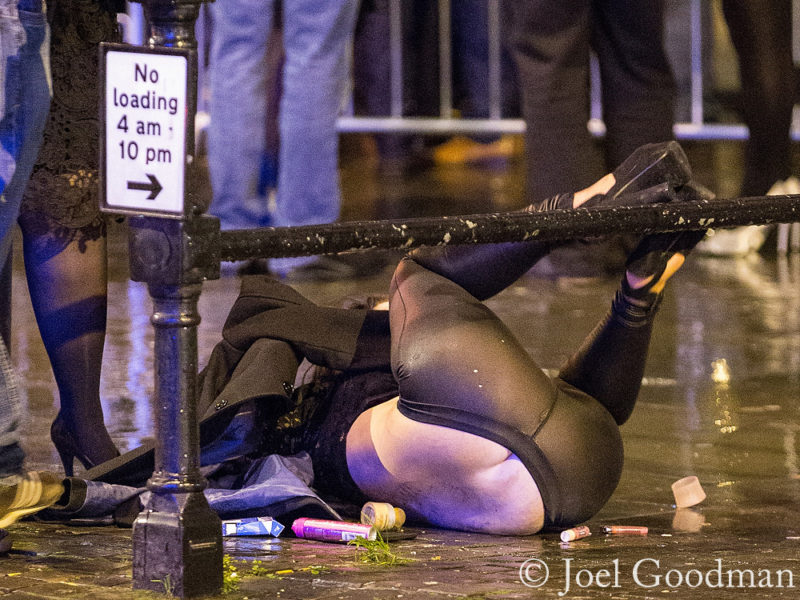
People getting drunk to the point of sickness and collapse, the fashions and social behaviour of people on a night out, the social and economic impact of this is news. You may not get why I document this, but my photographs of such have as much value as any social documentary and I am proud of the work I have done – and will continue to do – on this project.
*****
The photographs in this blog entry were taken on two nights, in the early hours of 22nd December 2013 and 1st January 2014 in Manchester. Below are some of the uses of the photos.
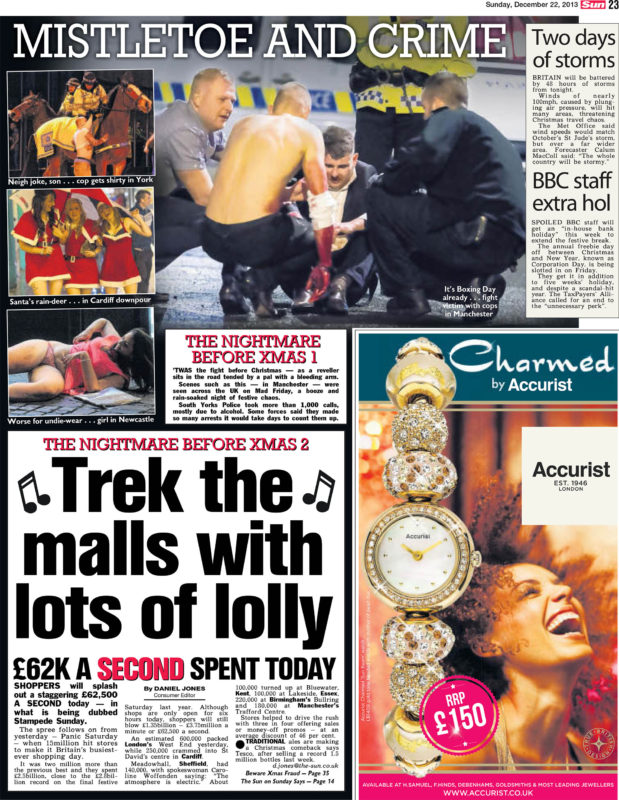

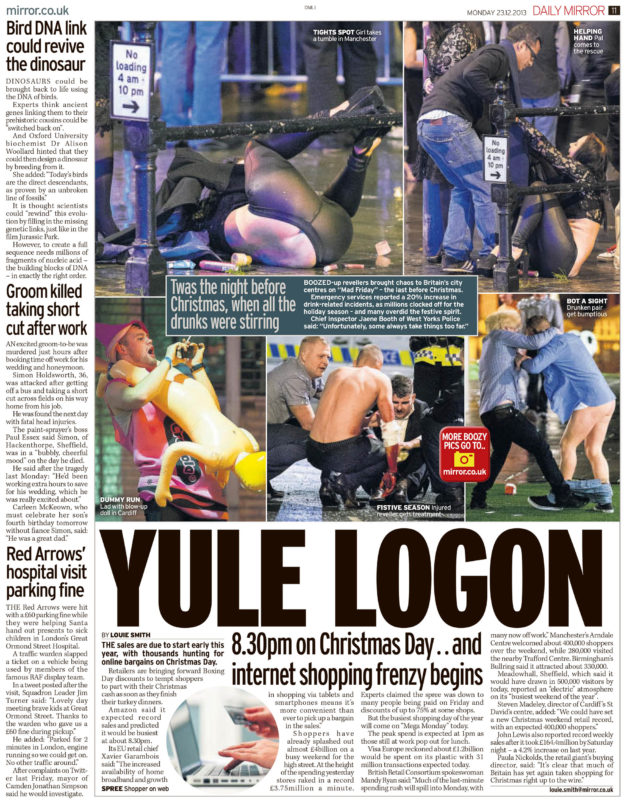
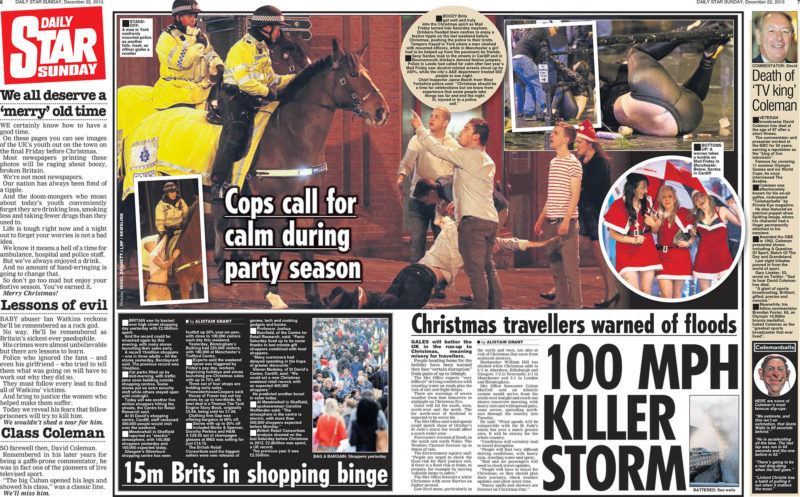
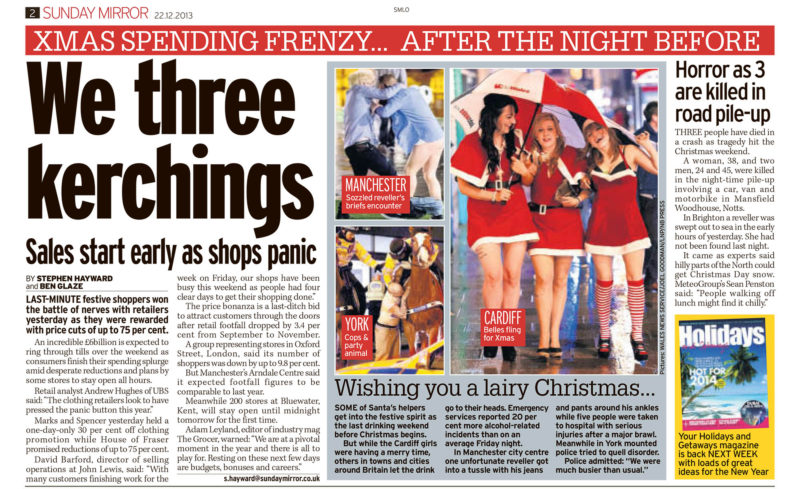
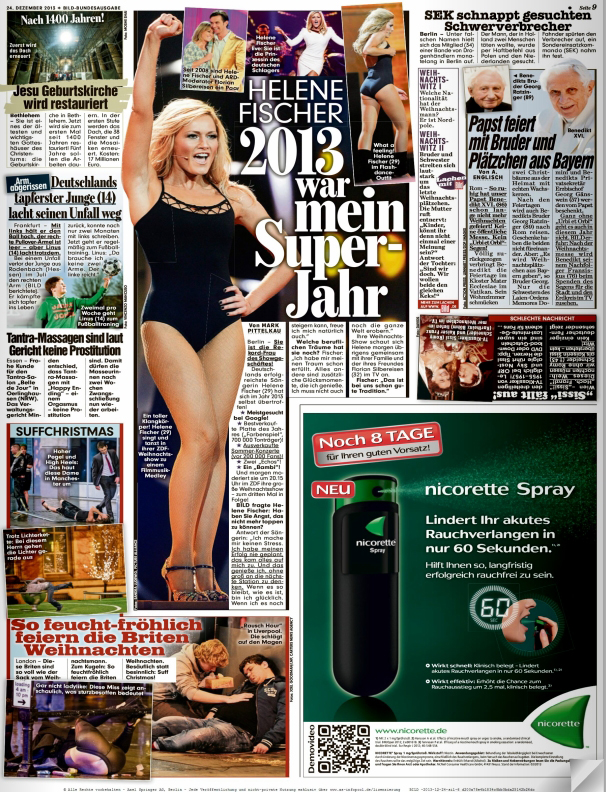

Addressing a fundamental misunderstanding



Great photos and a really well-written article. You can photograph what you want on the public highway.
Well said Joel. I know some of these pictures might be embarrassing for the subjects but they made the decision to get into that state. It’s an important piece of social journalism that needs to be recorded for historical reasons. As far as the police are concerned they need to be educated that they are there to enforce laws and not to be moral arbiters.They may not like what you do but if it’s within the law then it’s none of their business.
Joel can you tell us what happened?
Great photojournalism, keep it up , as Eddie says if people choose to behave like this in a public place, you the photojournalist have a perfect right to document it, I hope you are not being sensational in your captions, just factual, leave that to the publications that hopefully pay and publish and make their own editorial comments and judgements, I for one cannot condone sex, drugs and alcohol but they have always worked for me . ( Hunter Thompson, not my quote)
There have been other incidents in Manchester where the police have stood by while photographers have been attacked and have deleted photos from memory cards when taken by members of the public. The concern is that the police are trying to prevent coverage of the anti-social behaviour and crime in the city centre and one must ask why? Of course it’s embarrassing for the police but also for the city council, alcohol-related businesses and marketeers. So some of us wonder if there is an element of collusion to protect the night time economy. Many quite serious crimes don’t make it into the newspapers.
Not an easy subject to cover, great work Joel.